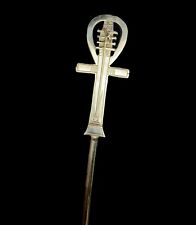
If comets hitting the Earth could cause ecological disasters, including extinctions of species and climate change, they could also disperse Earth-life to the most distant parts of the Galaxy.
The “splash-back” from a large comet impact could throw material containing micro-organisms out of the planet’s atmosphere, suggest scientists from the Cardiff University Centre for Astrobiology.
Although some of this outflowing material might become sterilised by heat and radiation, they believe that a significant fraction would survive. As the Earth and the Solar system go round the centre of the galaxy every 240 million years, this viable bacterial outflow would infect hundreds of millions of nascent planetary systems on the way. Hence, they suggest, the transfer of Earth life across the galaxy is inevitable.
These ideas are discussed in detail in the current issue of the Monthly Notices of the Royal Astronomical Society.
Interstellar routes for transmission of micro-organisms supports the view that life may not have originated on Earth but arrived from elsewhere, strengthening the “panspermia theory” that Professor Wickramasinghe and the late Sir Fred Hoyle had been developing since 1974.
It is known that boulders and other debris may be thrown from the Earth into interplanetary space. Professor Napier finds that collisions with interplanetary dust will quickly erode the ejected boulders to much smaller fragments and that these tiny, life-bearing fragments may be driven out of the solar system by the pressure of sunlight in a few years.
The solar system could, therefore, be surrounded by an expanding ‘biodisc’, 30 or more light years across, of dormant microbes preserved inside tiny rock fragments. In the course of Earth history there may have been a few dozen close encounters with star-forming nebulae, during which microbes might be injected directly into young planetary systems.
If planets capable of sustaining life are sufficiently common in the Galaxy, the Cardiff based scientists conclude that this mechanism could have infected over 10,000 million of them during the lifetime of our Galaxy.
Dr Wallis and Professor Wickramasinghe have also identified another potential delivery route. They point out that fertile Earth ejecta would, on impact, bury themselves in the radiation-shielded surface layers of frozen comets. A belt of such comets, the Edgeworth-Kuiper belt, lies beyond the planetary system. This belt gradually leaks comets into interstellar space, some of which will eventually reach proto-planetary discs and star-forming nebulae. There they are destroyed by collisions and erosion, releasing any trapped micro-organisms and seeding the formative planetary systems.


















Comments are closed.